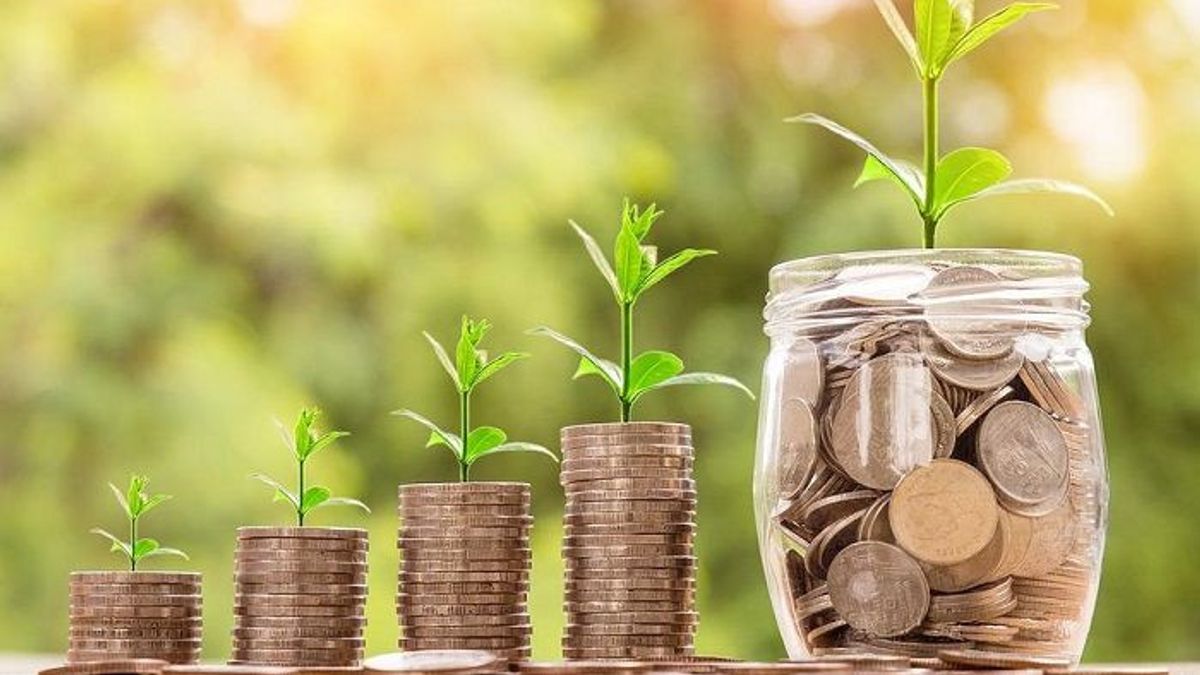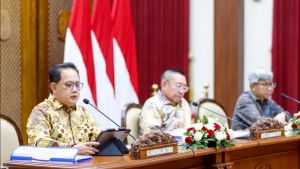JAKARTA - Indonesia's economic recovery trend continues and is getting stronger. In the second quarter of this year alone, Indonesia's economic value according to Gross Domestic Product (GDP) at constant prices reached IDR 2.93 quadrillion. The lift grew 5.44 percent (year on year) compared to the same period the previous year.
Likewise from the quarterly period, according to the Coordinating Minister for Economic Affairs Airlangga Hartarto, the Indonesian economy grew 3.73 percent (quarter over quarter).
Consumption and export spending became the main pillars of Indonesia's economic growth this quarter. The Government's policy of allowing the implementation of homecoming on Eid al-Fitr last May has encouraged public consumption and resulted in an economic turnaround throughout Indonesia.
Another support came from the impressive performance of Indonesia's exports. Apart from the increase in commodity prices, the strengthening of output capacity in various sectors also contributed to the increase in Indonesia's exports.
"Household consumption growth of 5.51 percent means that the growth engine in terms of households, which during COVID-19 had an impact, has now returned to its original condition," Airlangga said at a press conference on Friday (5/8).

Of course, this condition is relatively better than neighboring countries, such as Singapore, whose economy only grew 4.80 percent in the same period. Moreover, if you look at the two engines of world economic growth, namely China and the United States, they are in a stationary situation.
"The government hopes that this will not have an impact on the economy in ASEAN in the long term," Airlangga added.
Data from the Central Statistics Agency (BPS) stated that the spatial structure of Indonesia's economy during that period was still dominated by Java, which contributed 56.55 percent to GDP.
Next came from Sumatra with 22.03 percent of GDP, Kalimantan 9.09 percent, Sulawesi 7.1 percent, Bali and Nusa Tenggara 2.73 percent, then Maluku and Papua 2.51 percent.
Despite the smallest contribution, Maluku and Papua recorded the fastest economic growth rate, namely 13.01 percent (year on year) in the second quarter of 2022. According to BPS, growth in Maluku and Papua was supported by the mining sector with a share of 7.38 percent and the industrial sector 2 ,66 percent.
Airlangga predicts that growth will continue as reflected in the positive performance of various leading indicators of the Indonesian economy. The consumer confidence index is at a good score of 128.2 and retail sales continue to grow at 15.42.
Then, the prospect of increasing demand becomes an incentive for the industry to increase production, as reflected in the Purchasing Manager Index (PMI) which is recorded to continue to expand at an increasingly strong level.
"On that basis, the government is optimistic that Indonesia's overall economic target of 5.2 percent can be achieved," he said.
Can't Be JealousHowever, according to the Director of the Center of Economic and Law Studies (Celios) Bhima Yudhistira, the government must remain vigilant because the challenges in the second semester of 2022 will be much more difficult.
“There is imported inflation due to the high price of raw materials and this is expected to be passed on to consumers. The widespread conflict, not only Russia-Ukraine but China-Taiwan is expected to worsen supply chains and cause a weakening of the direct investment side," he said as quoted by Media Indonesia, Friday (5/8).

In line with the Dean of the Faculty of Economics and Business from the University of Indonesia, the impact of deteriorating world conditions is likely to affect Indonesia in the third quarter of 2022. The increase in the price of imported products due to inflation and depreciation is something that cannot be avoided.
"This needs to be anticipated. So we can be proud, but don't be complacent because global challenges are still full of uncertainty and we must be prepared to overcome them," he said.
Strategy and PolicyAccording to Airlangga, the government's optimism cannot be separated from the consistency in carrying out various main strategies and policies to encourage accelerated recovery and increase Indonesia's economic resilience.
Among others, by easing community mobility and preparing a strategy for the transition of economic activity and community mobility from the pandemic era to the new normal era.
The government also encourages people's purchasing power for the lowest 40 percent group through the PEN program in the social protection cluster which is budgeted at Rp63.7 trillion for PKH assistance, cooking oil BLT, Village BLT, BTPKLWN, and Pre-Employment Cards.
As for anticipating world turmoil as a result of the Russo-Ukrainian war and the escalating conflict between China and Taiwan, the government has also drawn up responsive measures to contain the increase in food and energy prices by adding subsidies.
In addition, the Pre-Employment Card Program is also continuously encouraged as an effort to improve the competence, productivity, and competitiveness of the workforce. Efforts to develop MSMEs continue to be carried out.

Among other things, through increasing the KUR ceiling of Rp.
"These various policy measures and structural reforms will encourage Indonesia's economic growth so as to create jobs for the wider community," he added.
Launching from Investor Daily, Director of the Institute for Demographic and Poverty Studies (IDEAS) Research Institute Yusuf Wibisono also asked for the performance of a number of priority sectors to be improved immediately.
Such as in the food sector by maintaining the supply of fertilizers and animal feed at prices that are affordable for farmers and ranchers. Also, the energy sector by maintaining the supply of gas and coal for the domestic industry.
“For the real sector, it is good enough to hold the BI rate in the range of 3.5 percent. The government must welcome it by encouraging aggregate production and supply so that the shadow of inflation that may occur in the third and fourth quarters can be controlled," he said, Saturday (6/8).
The English, Chinese, Japanese, Arabic, and French versions are automatically generated by the AI. So there may still be inaccuracies in translating, please always see Indonesian as our main language. (system supported by DigitalSiber.id)








